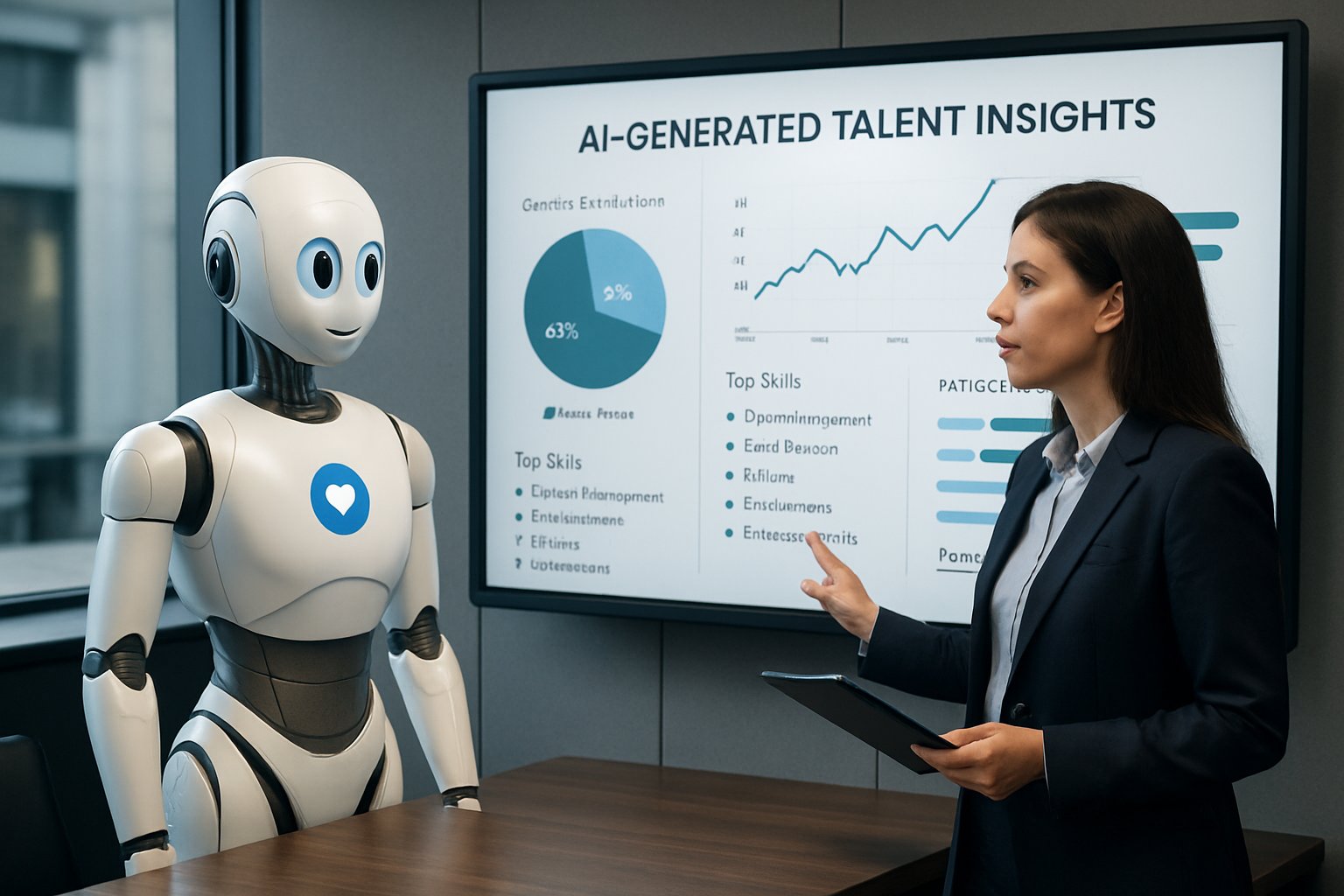
AI CERTS
13 hours ago
Consultancies and HR AI adoption reshape talent strategy
These combined insights spotlight an urgent execution gap within HR AI adoption efforts. Moreover, 70% of respondents say AI already cut consultancy spending, hinting at commercial upheaval ahead. Therefore, understanding demand patterns, skill shortages, and risk factors is essential for strategic planning. This article unpacks the numbers, explores consultancy responses, and outlines actionable next steps.

Study Signals Market Shift
Kognitiv surveyed 500 HR decision-makers across the UK and Germany in October 2025. The findings underline a sharp market inflection. However, 80% want consultancies to integrate AI more deeply within workflows. In contrast, 44% say current partners lag in adoption speed. Furthermore, 70% report AI already reduced external spend. Such sentiment amplifies the business case for HR AI adoption at scale.
- 80% demand better AI integration from consultancies.
- 46% believe AI can replace most consulting work.
- 70% have cut consultancy budgets thanks to AI solutions.
- 59% foresee blended human-AI service models.
These numbers confirm a decisive client mood. Consequently, understanding root drivers becomes critical. The next section explores those forces.
Drivers Behind AI Demand
Cost containment sits atop every CHRO agenda today. Moreover, AI promises rapid efficiency through HR automation of repetitive tasks. Chatbots now resolve basic employee queries in seconds, avoiding expensive billable hours. Additionally, predictive models deliver people analytics that accelerate workforce planning. Faster insight, not headcount, drives the new value story.
Strategic agility follows close behind cost drivers. Generative systems craft personalized learning paths, enhancing employee engagement. Consequently, leaders link HR AI adoption to talent competitiveness. In contrast, traditional manual analysis misses momentary opportunities. People analytics therefore becomes indispensable for evidence-based decisions.
Efficiency and insight explain escalating demand signals. However, skills gaps threaten value realization. The following section examines that deficit.
Manager Skills Gap Exposed
Gartner highlights a stark readiness problem. Only 8% of HR leaders believe managers can exploit AI effectively. Furthermore, 88% admit little realized business value so far. In response, workforce reskilling has become an urgent imperative. Nevertheless, The Conference Board finds just 7% implementing such programs.
Manager capability is central because AI augments daily supervisory decisions. People analytics dashboards deliver insights, yet interpretation still requires contextual judgment. Therefore, blended learning and change mgmt must accompany technical rollouts. HR automation alone cannot bridge behavioural gaps. Consequently, HR AI adoption stalls without robust human enablers.
The evidence exposes a crippling skill deficit. Subsequently, consultancies face pressure to redesign service offerings. Next, we explore how firms are responding.
Consultancy Models Evolving Fast
Consultancies are retooling delivery blueprints under twin cost and capability pressures. Accenture, Deloitte, and Kognitiv now embed proprietary AI components inside Workday deployments. Moreover, subscription bundles mix algorithms with human experts, clarifying consultancies role in ongoing optimization. Kognitiv CEO Mark Grignon argues laggards pass a "complexity tax" to clients. Consequently, HR AI adoption now influences partner selection criteria.
Emerging commercial models also bundle workforce reskilling support with technical installs. Additionally, change mgmt plays a role in accelerating behavioral adoption. People analytics coaching rounds out the package, creating measurable outcome commitments. In contrast, time-and-materials contracts appear increasingly dated.
Service designs are clearly shifting toward automation-plus-advisory constructs. However, risks and roadblocks still loom. The next section evaluates those challenges.
Practical Roadblocks And Risks
Even successful pilots face legal, ethical, and scaling hurdles. California's proposed "No Robo Bosses" rules exemplify heightened scrutiny. Meanwhile, lawsuits like Mobley v. Workday raise bias liability concerns. Therefore, audit trails, diverse training data, and human oversight become mandatory. HR automation without safeguards can amplify systemic discrimination.
Data privacy also constrains people analytics deployments across Europe. Moreover, governance councils must manage algorithm drift. Consultancies role therefore expands to include compliance advisory. Nevertheless, many firms lack dedicated change mgmt resources to enforce new guardrails. Consequently, HR AI adoption programs risk reputational damage if corners are cut.
Risk mitigation demands structured methodologies and clear accountability. Subsequently, HR leaders need actionable roadmaps. Our final section outlines those steps.
Action Plan For HR
Successful leaders begin with an enterprise-wide diagnostic. Furthermore, they map use cases against business pain points before investing. A phased approach to HR automation prevents overwhelm and clarifies early returns. Meanwhile, integrated people analytics benchmarks track value realization. Consequently, HR AI adoption initiatives stay aligned with strategic objectives.
Parallel investment in workforce reskilling builds the human foundation. Moreover, structured change mgmt ensures behaviors evolve with new insights. Professionals can enhance their expertise with the AI+ Human Resources™ certification. The credential blends ethical AI design, analytics, and transformation playbooks. Subsequently, certified leaders drive smoother HR AI adoption across functions.
- Define governance and success metrics.
- Start small with high-value pilots.
- Pair every tool with workforce reskilling modules.
- Embed rigorous compliance testing.
- Scale after measurable win milestones.
Clear definition of the consultancies role within each phase avoids duplication. These steps convert appetite into sustainable advantage. Therefore, HR teams can capture full AI potential. The following conclusion synthesizes key insights.
Conclusion
AI is transforming HR strategy, consultancy economics, and workforce capability at speed. However, success demands more than installing clever algorithms. Cost, insight, and compliance goals converge only when leaders pair technology with ambitious workforce reskilling. Therefore, robust people analytics, disciplined change mgmt, and clear consultancies role must align. When these fundamentals click, HR AI adoption delivers measurable and defensible business value. Consequently, forward-thinking professionals should refine plans and secure relevant certifications today.



